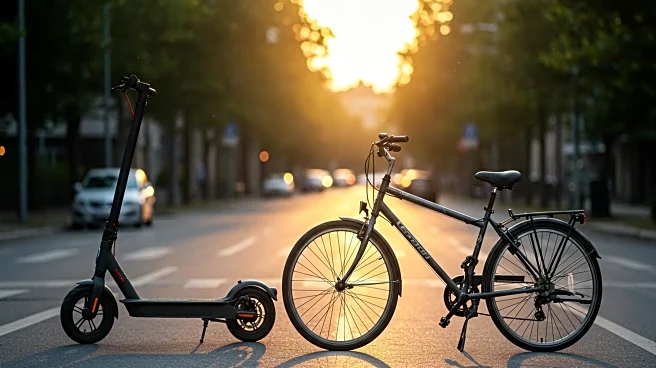What's Happening?
Shared micromobility systems, including bike and scooter shares, have seen significant growth across North America, with a 31 percent increase in ridership in 2024 compared to 2023. In the United States, this growth was even higher at 32 percent, according to the Shared Micromobility State of the Industry Report by the North American Bikeshare and Scootershare Association (NABSA). The report highlights the expansion of these systems in 415 cities, with 354 in the U.S. alone, providing 171 million trips on 285,000 vehicles. This growth is attributed to increased investment in fleets, making vehicles more accessible and visible, thus encouraging usage. The report also notes that 35 percent of these trips replaced car trips, offsetting 101 million pounds of greenhouse gas emissions.
Why It's Important?
The growth of shared micromobility systems is significant for urban transportation, offering an alternative to car travel and contributing to environmental sustainability by reducing emissions. With 74 percent of riders using these systems to connect to public transit, they play a crucial role in enhancing the public transportation ecosystem. The increase in electric bicycles and scooters, which now make up 79 percent of micromobility fleets, further supports the shift towards greener transportation options. This trend underscores the need for continued investment in infrastructure to support these systems, highlighting their importance in urban planning and environmental policy.
What's Next?
Industry officials are advocating for more public-sector investment in micromobility infrastructure and operations to sustain growth and address gaps in service. Successful programs require collaboration between operators and cities to ensure long-term sustainability. As the industry matures, there is a push for agencies and operators to work together to identify and support areas needing improvement, ensuring that shared micromobility remains a viable and effective transportation option.

